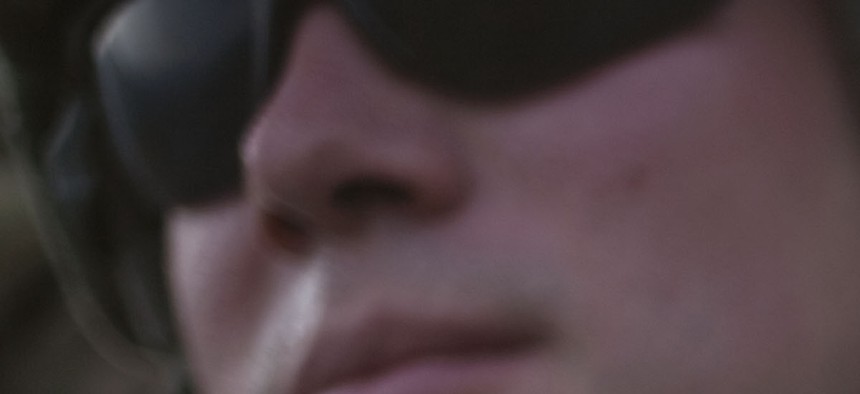
AP Photo/David Goldman
The Army’s Misguided Crackdown on Tattoos
The Army’s new policies on tattoos and other physical appearance standards is part of a peacetime crackdown that usually lasts until the next war. By James Joyner
Despite being in its thirteenth year of combat in Afghanistan and facing threats to its budget on the home front, the United States Army is focusing its energy on a more longstanding menace: soldiers whose appearance drives sergeants major crazy.
The vagaries of recruiting during wartime forced Uncle Sam to turn a blind eye to volunteers with tattoos covering their entire arms and neck. Male soldiers sporting Elvis-like sideburns and black soldiers with blonde eyebrows made senior NCOs shake their heads but were nonetheless allowed to go downrange to fight the Taliban. And let's not even talk about what some of these individuals looked like off duty at the PX or back home on leave.
With the war in Iraq over and the one in Afghanistan rapidly winding down, though, Sergeant Major of the Army Raymond Chandler is finally doing something about all that. A revised Army Regulation 670-1, the bible for uniform and grooming standards, is one signature away from going into effect. For the first time, violations will reportedly be punishable under the Uniform Code of Military Justice.
The most discussed change is that new soldiers will be forbidden from having tattoos below the elbows and knees or above the neckline—essentially, any that are visible in PT gear. Those already in the service will be grandfathered but have to document their existing ink with their commanding officer. New soldiers with nonconforming tats will be required to have them removed at their own expense.
Soldiers will also be prohibited from eating, drinking, smoking, or talking on cellphones while walking; presumably this is to ensure they're not distracted from or incapacitated to salute senior officers. Bags and backpacks will have to be black or match the color of the uniform. Hair color and cut standards will be more precisely written to ensure soldiers don't get away with looking funny. Apparently, one soldier told Chandler that her purple hair was auburn, and thus a "natural" color permissible under the regulations, and a black sergeant major had her eyebrows dyed blonde.
These changes are hardly unexpected. Senior officers and, especially, senior NCOs are historically very interested in these issues and the policies inevitably loosen during wartime and other times when meeting recruiting targets is difficult and then rebound once the wars wind down.
Abhorrence for nonconformity runs deep in Army culture. As Chandler explained to a group of soldiers at Fort Jackson, S.C., "If you have a tattoo that draws attention to yourself, you have to ask the question, are you a person who is committed to the Army? Because the Army says you are part of the same organization. We all generally look the same. And we do not want you to stand out from the rest of the Army."
The goal here, which I share, is for soldiers to project a professional image. But there's a fine line between enforcing "professionalism" and pushing one generation's pet peeves on another.
Like many NCOs of his generation, my father, who retired from the Army after twenty years as a first sergeant, had a tattoo on his forearm. He got it as a young trooper in Vietnam and managed to be a professional soldier another seventeen years, earning several promotions and commendation medals. What's cool in one generation is almost by definition uncool the next, so it would have been unthinkable for either SMA Chandler or myself to get one. Style is cyclical, however, and tats are back.
While I share Chandler’s visceral reaction to extreme tattoos and unusual hair coloring, these new regulations are wrongheaded. There's simply zero evidence that people sporting them make subpar soldiers or diminish their unit’s esprit de corps. (Obviously, gang symbols and racially offensive ink is a different story; but they’re already banned.)
Beyond that, it's rather ludicrous to set an arbitrary peacetime standard for the appearance of soldiers, a profession that exists solely to fight America's wars, that will go by the wayside when the shooting starts again. The Army should focus its dwindling resources on winning those future wars, not looking good in garrison.
James Joyner is an associate professor of security studies at the Marine Corps Command and Staff College and a nonresident senior fellow with the Brent Scowcroft Center on International Security at the Atlantic Council. These views are his own.




